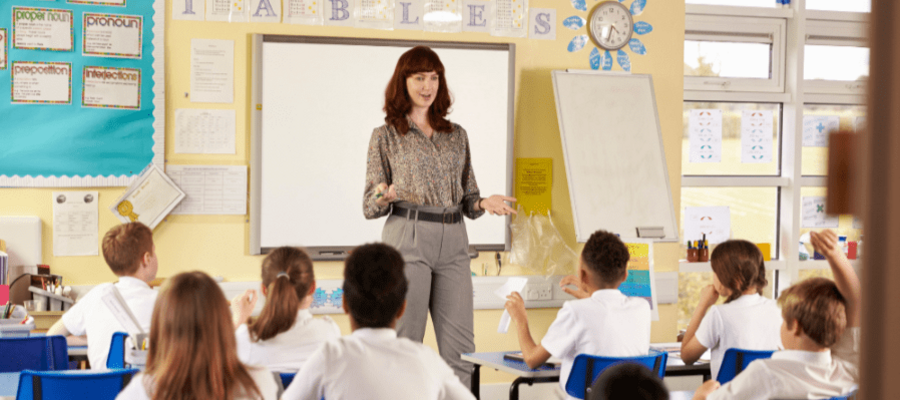Classroom conflict is an inevitable part of the primary school experience. Young students are learning how to navigate social interactions, develop emotional intelligence, and solve problems with their peers. As a teacher, handling classroom conflict in a constructive and positive way is essential not only to maintain a calm learning environment, but also to foster important life skills in your students.
In this article, we’ll explore practical and effective strategies to handle conflict in primary school classrooms, encouraging teachers to manage disputes with confidence and turn challenging situations into valuable learning opportunities.
Recognise the Causes of Conflict
Common causes of classroom conflict among primary school students include:
Miscommunication: Children at this age are still developing communication skills and often misunderstand each other's words or actions.
Personal Differences: Differences in personality or interests can lead to misunderstandings and disagreements.
Competition for Attention: Young children often seek attention from their teachers and peers, and this can sometimes manifest in conflict when they feel overlooked.
Resource Scarcity: Disputes often arise over limited classroom resources, such as books, toys, or access to technology.
Peer Influence: Children may argue over friendships, social status, or peer pressure, which can lead to conflict.
By identifying the root cause of the conflict, teachers can tailor their response and guide students towards resolving the issue more effectively.
Positive Classroom Culture
Establishing a positive, inclusive classroom culture where respect, empathy, and kindness are encouraged can significantly reduce the frequency and intensity of conflicts.
Here are some key strategies:
Set Clear Expectations: At the beginning of the school year, establish classroom rules and expectations for behavior. Make sure students understand the importance of respect.
Model Positive Behavior: Children learn a lot by observing their teachers. Demonstrate calmness, respect, and problem-solving skills in your own interactions.
Promote Social-Emotional Learning (SEL): Integrating SEL into daily lessons helps children develop the skills to manage their emotions, understand others’ perspectives, and resolve conflicts peacefully.
Use Conflict Resolution Techniques
When a conflict does arise, handling it effectively is crucial to ensure that students learn valuable conflict resolution skills. Here are some techniques to use:
Active Listening: Give each student involved in the conflict an opportunity to express their feelings and thoughts without interruption. Show that you’re listening by nodding, making eye contact, and reflecting back what you hear.
Encourage Empathy: Help students see things from each other’s perspectives. Ask them how they would feel in the other person’s shoes, fostering a sense of empathy and understanding.
Guide Them to Find Solutions: Instead of dictating the solution, encourage students to brainstorm possible ways to resolve the conflict. Guide them towards finding a compromise or win-win solution.
Use “I” Statements: Teach students to express their feelings using “I” statements, such as “I feel upset when…” instead of blaming others. This helps de-escalate the situation and encourages more thoughtful communication.
Mediation and Peer Support
Sometimes, conflicts can be more effectively resolved with the help of a neutral third party. Involving peers in resolving disputes can teach important social skills and give students a sense of ownership in the process.
Here’s how you can incorporate mediation:
Peer Mediation Programs: Train older students or selected "peer mediators" to help younger students resolve conflicts. Peer mediators can act as neutral parties who guide their classmates through the conflict resolution process.
Buddy Systems: Pair students who frequently clash with each other in activities or group work. The goal is to encourage teamwork and cooperation, helping students understand each other’s strengths and weaknesses.
Addressing Bullying and Persistent Conflict
While most classroom conflicts are manageable with the right approach, persistent bullying or aggression requires more serious intervention. Teachers need to identify signs of bullying early on and take appropriate steps to address the behavior.
Create a Safe Space
Ensure that students feel safe reporting bullying. Create a system where they can voice their concerns anonymously if needed.
Involve Parents: For ongoing conflicts, particularly those involving bullying, it’s important to involve parents or guardians. Communicate clearly with them about the behavior and work together to develop a plan for addressing it.
Set Consequences: Consistently apply fair consequences for bullying or aggressive behavior. Ensure students understand the repercussions of their actions and the importance of treating others with respect.
Know When to Seek Additional Support
There are times when conflicts are more complex or when students need additional support. If you notice a student is consistently involved in conflicts, or if you’re dealing with particularly challenging situations, seeking support from school counselors, psychologists, or other educational professionals can be beneficial.
Conclusion
Classroom conflict is a normal part of primary school life, but how teachers handle it can make all the difference. By fostering a positive classroom culture, using conflict resolution strategies, promoting empathy, and seeking additional support when needed, educators can help students develop essential social-emotional skills that will benefit them both inside and outside the classroom.
By turning conflict into a learning opportunity, teachers not only resolve immediate issues but also contribute to the long-term emotional and social development of their students. With the right approach, every conflict can become a stepping stone toward a more peaceful, cooperative, and supportive classroom environment.
If you want to work with a company that cares, contact our education team by either calling01772 208 952or email us ateducation@servicecare.org.uk. Alternatively, submit a vacancy using the link below!


.png)









Let's getsocial...